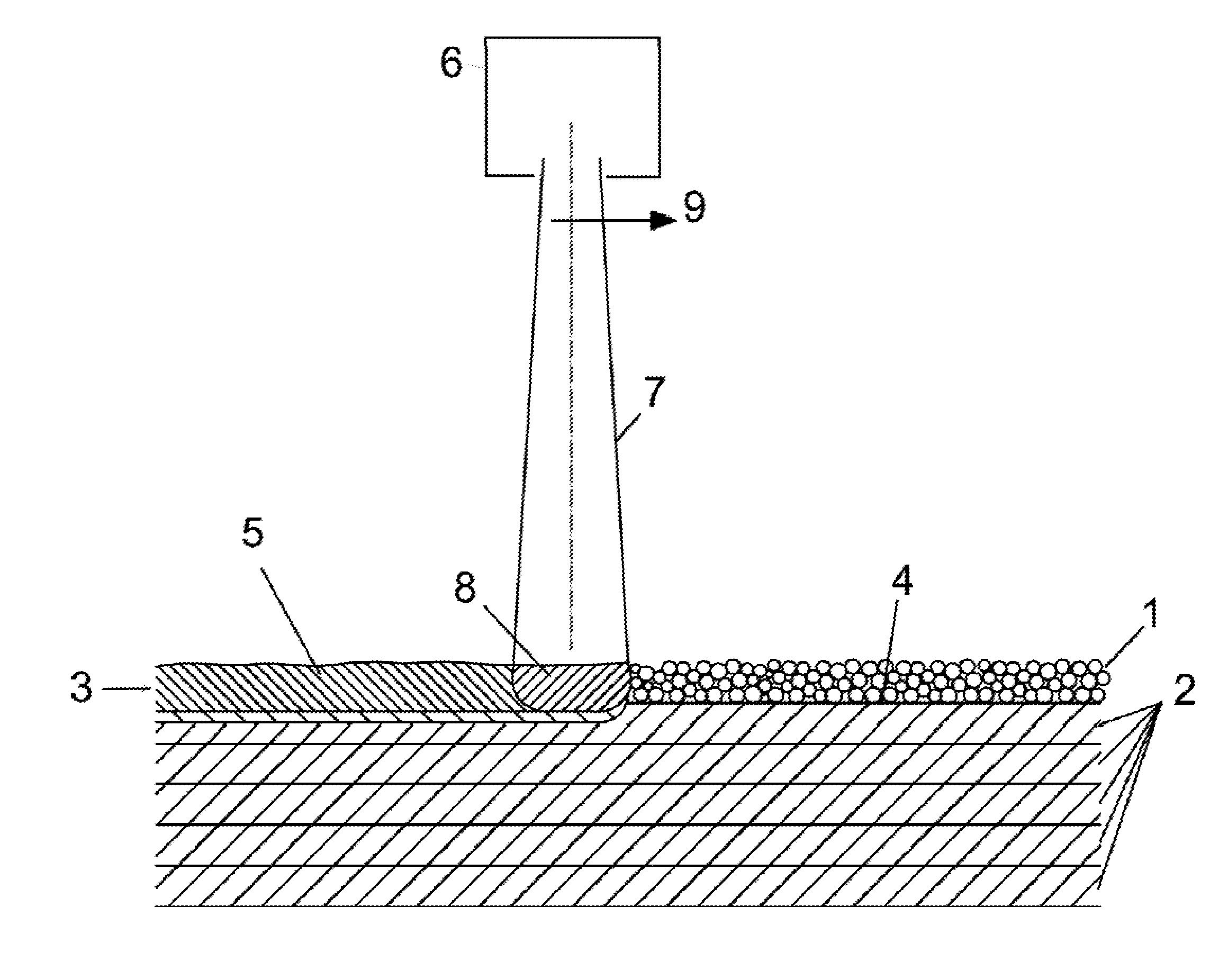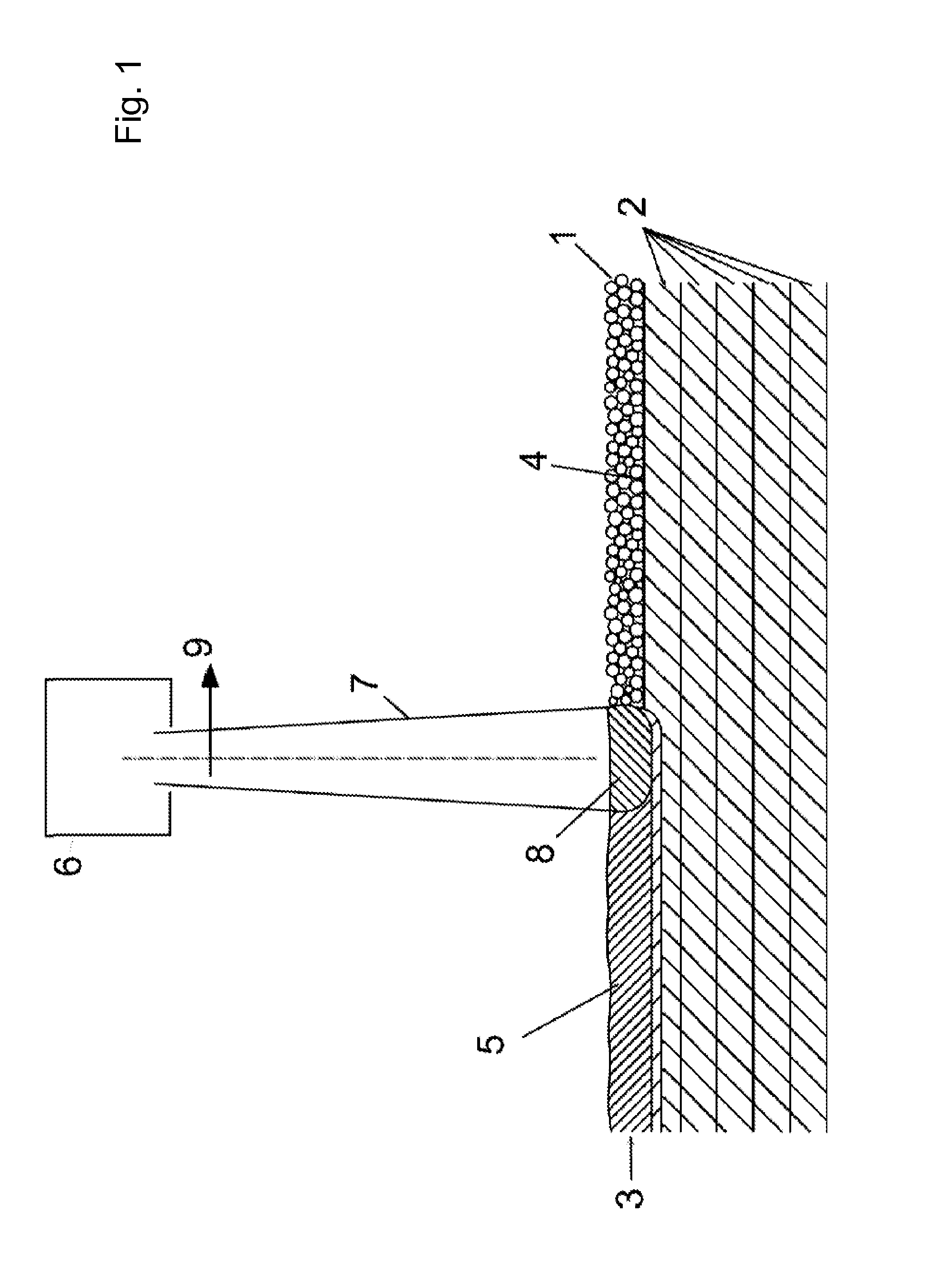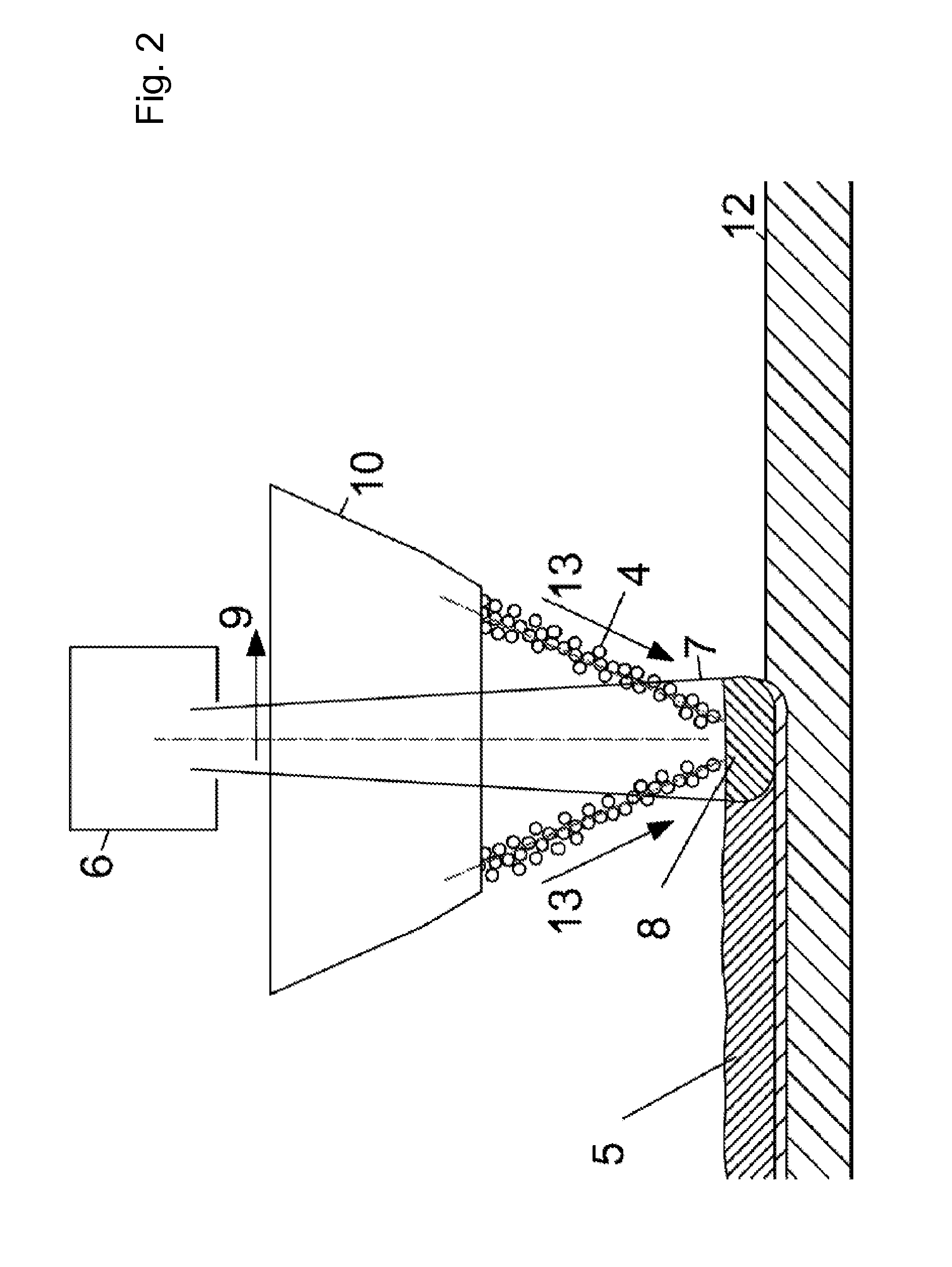Method for Producing a Component
a manufacturing method and technology for components, applied in the direction of railway components, nuclear engineering, plasma technology, etc., can solve the problems of high cost, time-consuming and expensive, and the difficulty of mechanical processing or machining of such a composite material
- Summary
- Abstract
- Description
- Claims
- Application Information
AI Technical Summary
Benefits of technology
Problems solved by technology
Method used
Image
Examples
example 1
Milling Aluminum-Diamond Powder
[0114]Diamond powder (size 70-90 μm) and pure aluminum powder (grain size 2 (stabilized with Y2O3). Since aluminum is deposited on the balls and milling cups, the aluminum must be added in amounts greater than the theoretical amount in order to arrive at the desired aluminum-diamond mixture composition. The milled powder may then be used directly for generative manufacturing or preferably may be screened first to remove large particles.
example 2
Production of Aluminum-Diamond Thermal Conductivity Samples in a Powder Bed
[0115]In the following example, thermal conductivity samples of 70 vol % diamond powder (size 70-90 μm) and 30 vol % pure aluminum (grain size <45 μm) were manufactured in a laser-based powder bed process. The laser power was 300 W and the scan rate was 800 mm / s. The samples had a diameter of approximately 14 mm and were approximately 5 mm thick. They were then machined to a diameter 12.3 mm and a thickness of 2.6 mm and their surfaces were polished. As shown in FIG. 6, the thermal conductivity values of the aluminum-diamond samples are significantly higher in comparison with those of pure aluminum.
PUM
| Property | Measurement | Unit |
|---|---|---|
| size | aaaaa | aaaaa |
| size | aaaaa | aaaaa |
| size | aaaaa | aaaaa |
Abstract
Description
Claims
Application Information
 Login to View More
Login to View More - R&D
- Intellectual Property
- Life Sciences
- Materials
- Tech Scout
- Unparalleled Data Quality
- Higher Quality Content
- 60% Fewer Hallucinations
Browse by: Latest US Patents, China's latest patents, Technical Efficacy Thesaurus, Application Domain, Technology Topic, Popular Technical Reports.
© 2025 PatSnap. All rights reserved.Legal|Privacy policy|Modern Slavery Act Transparency Statement|Sitemap|About US| Contact US: help@patsnap.com



